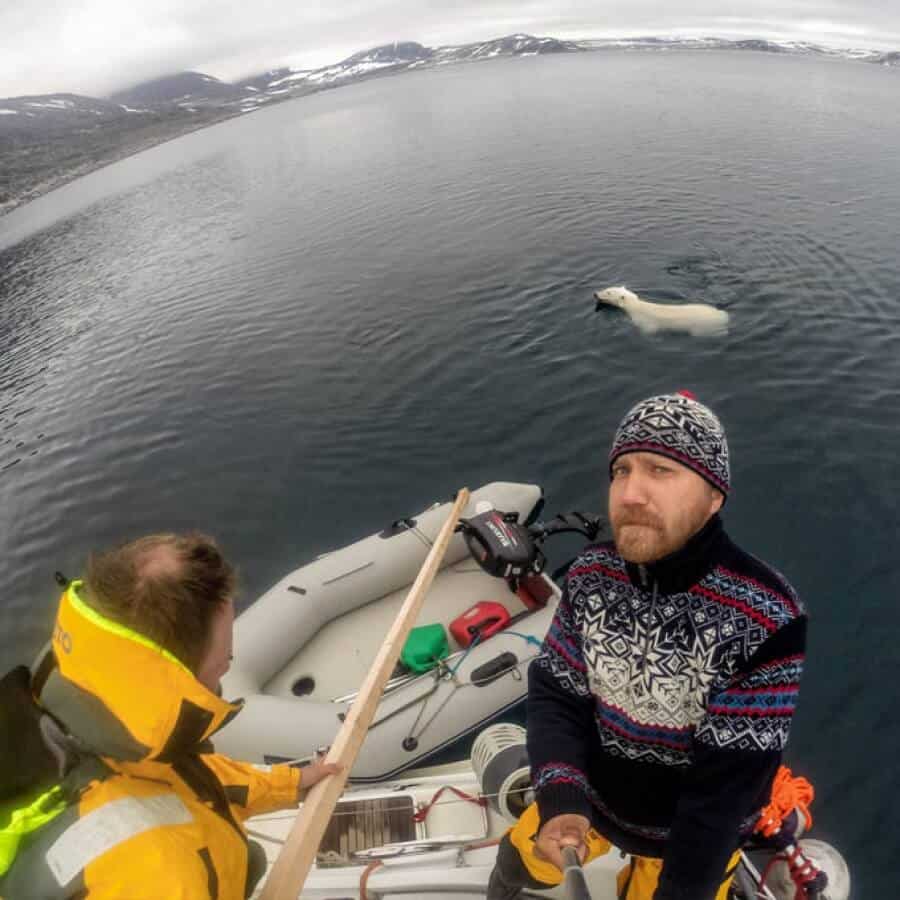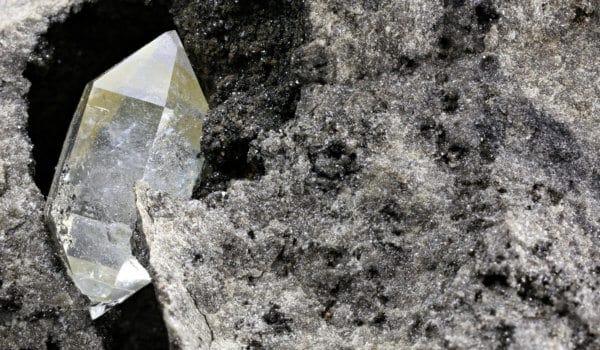We continue herewith Ivan Kutasov’s series of articles about his adventures in Svalbard. In the following article Ivan will disclose why you can't even lift a log in the archipelago, what the northernmost town on our planet looks like, and how a polar bear tried to find his way onto the expedition’s yacht in search of fish.
On the 40th day of the expedition we left Ny-Ålesund – the northernmost town in the world. This place is situated at latitude 78° in Spitsbergen, the largest island of the Svalbard archipelago in northern Norway.
We decided to head straight to the northern part of the Archipelago through the famous Nordvest-Spitsbergen National Park. Then we spent a few days exploring Krossfjorden. You can find this unique fjord with enormous glaciers on the western coast of Spitsbergen.
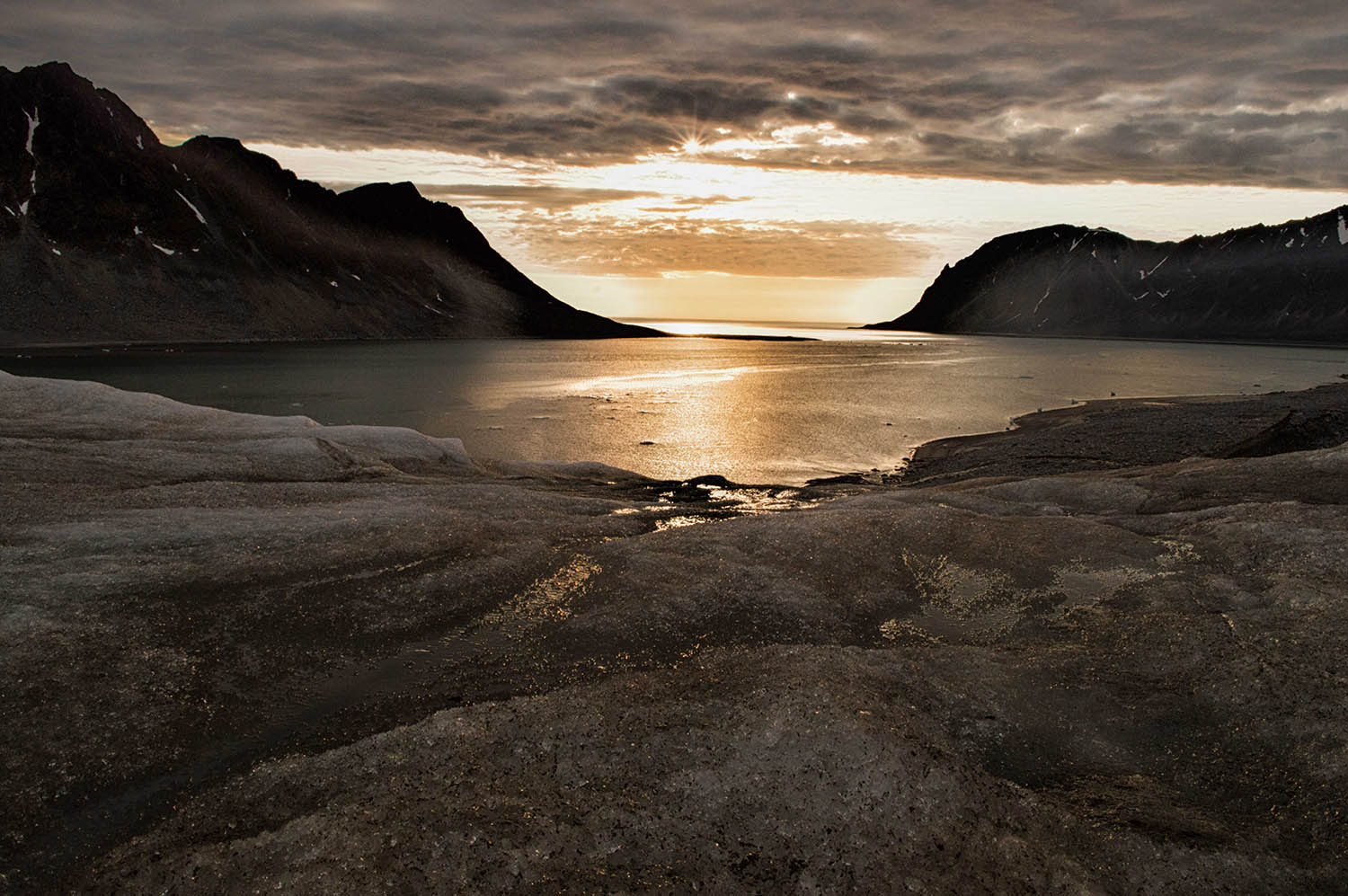
Photo by Ivan Kutasov
The unique fjord Krossfjorden
The history of this place is extraordinarily interesting. The origin of its name, which is translated as the “Cross Fjord”, has a simple explanation. The earliest explorer in this region was the Englishman Jonas Poole. This explorer left a tall cross on the hill with an inscription to mark the date of his arrival.
The first settlers appeared here only at the beginning of the 17th century. Apparently the British sailors appreciated the secure position of the harbor.
However, as it turned out, there aren’t a lot of suitable harbors in Krossfjorden. On the contrary, its coast is rocky and forbidding. Soon, in 1600, the first whalers’ village was set up on the coast of Krossfjorden.
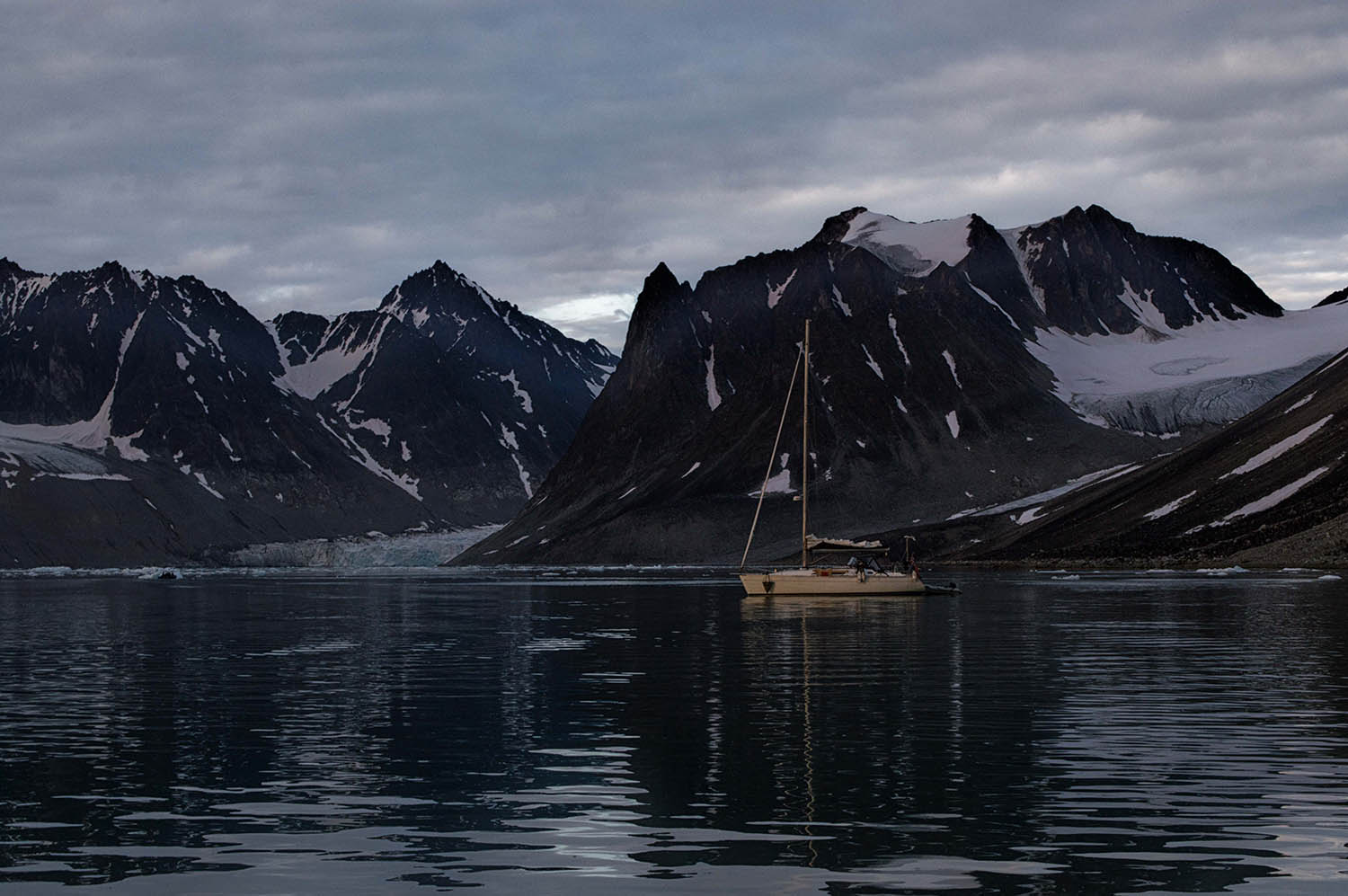
Photo by Ivan Kutasov
In 1662, the whales disappeared from the sea near Spitsbergen. The whalers’ base became unprofitable, so the sailors abandoned the place soon afterwards too.
Only the cemetery and the fragments of a furnace for making oil from whale fat have survived to the present day. Those serve as a reminder of the severity of these places.
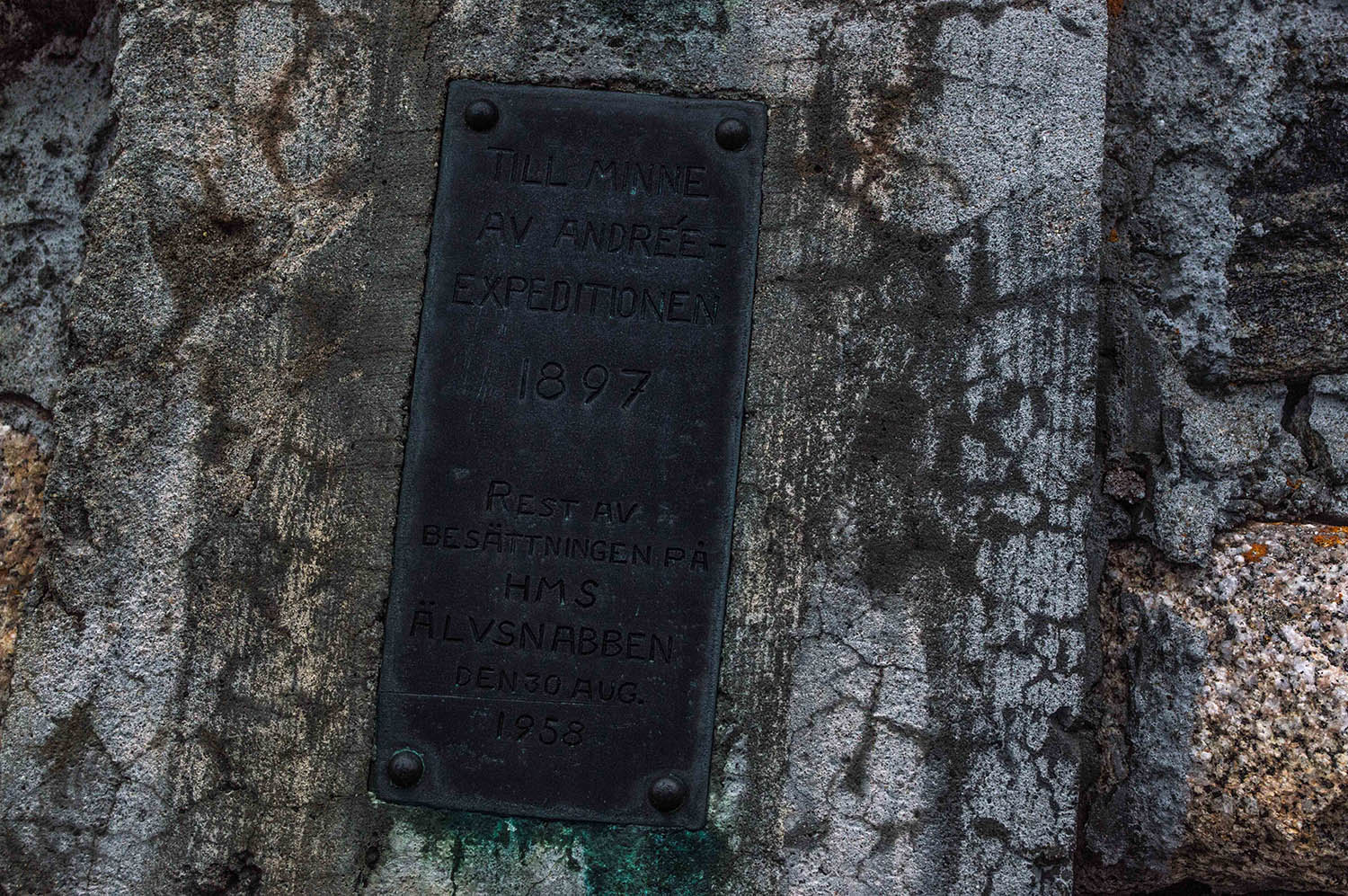
Photo by Ivan Kutasov
The Nothern coast of Spitsbergen
Next we visited a small bay called Virgohamma. For that we had to sail to the northern coast of Danes Island.
In order to visit it, we had to get specific permission in Longyearbyen from the governor of Spitsbergen. They call the special permission the “Sysselmannen” here.
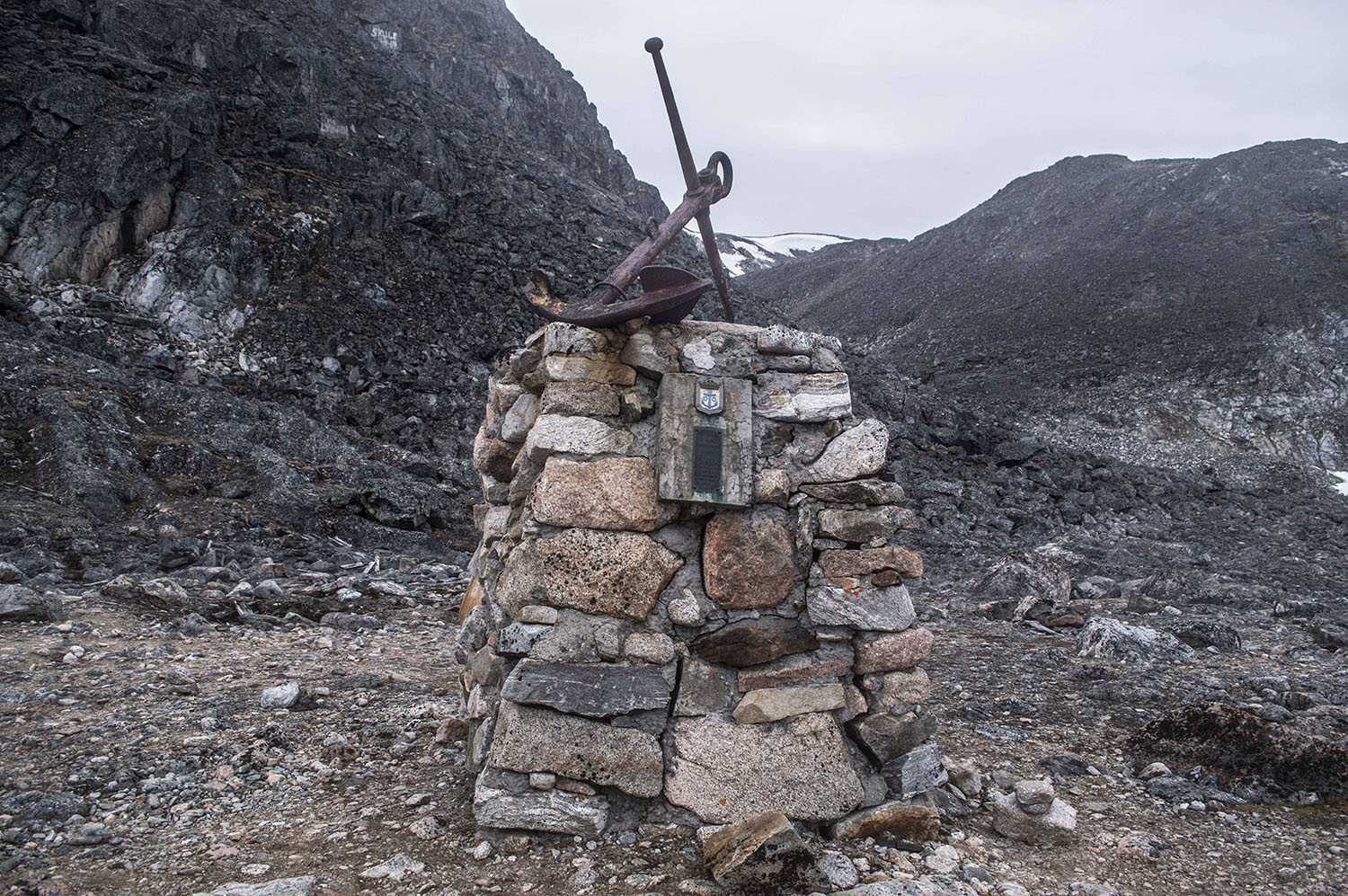
Photo by Ivan Kutasov
The fact is that this bay is a kind of open-air museum. Therefore, there is a law which applies on the entire territory of Spitsbergen. It prohibits picking up any artifacts, and even an ordinary log might have archaeological value. Since there are no trees on Spitsbergen, therefore a log could have been brought here either by man or by the elements.
We can translate Virgohamma from Norwegian as the “Virgin’s Bay”. This bay has a name after “Virgo”, the boat which belonged to the Swedish engineer and explorer Salomon Andrée.
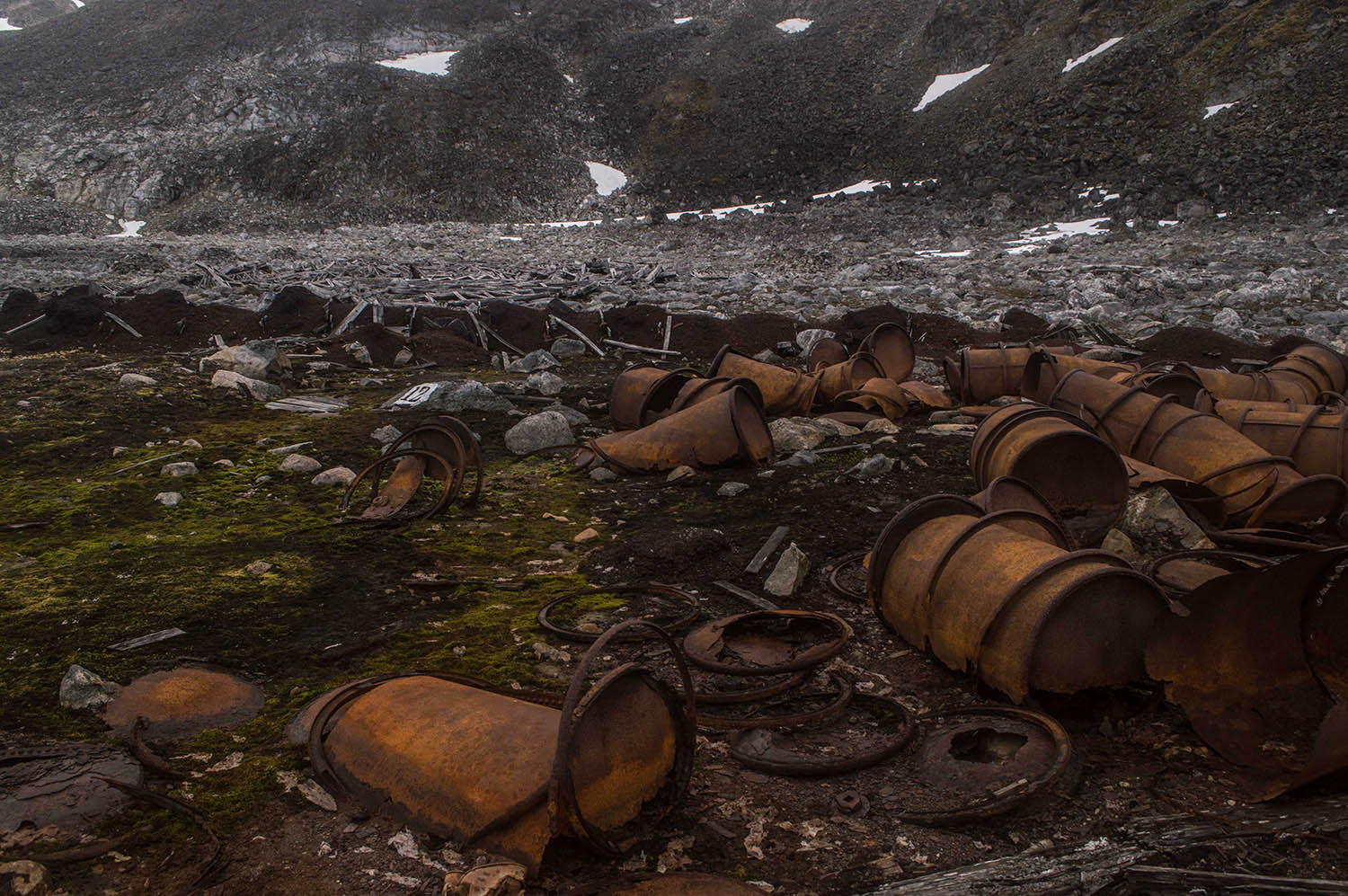
Photo by Ivan Kutasov
Two Polar Expeditions
This historically eventful place has traces of as many as two polar expeditions. One of them is associated with the aforementioned Salomon Andrée. In 1897, Salomon made an attempt to reach the North Pole in a hydrogen-filled balloon called “The Eagle”.
But the outcome of this endeavor was tragic. Andrée and two of his companions died on a deserted island in the north-west part of Spitsbergen. That occured after three months of torturous wandering through Arctic ice packs.
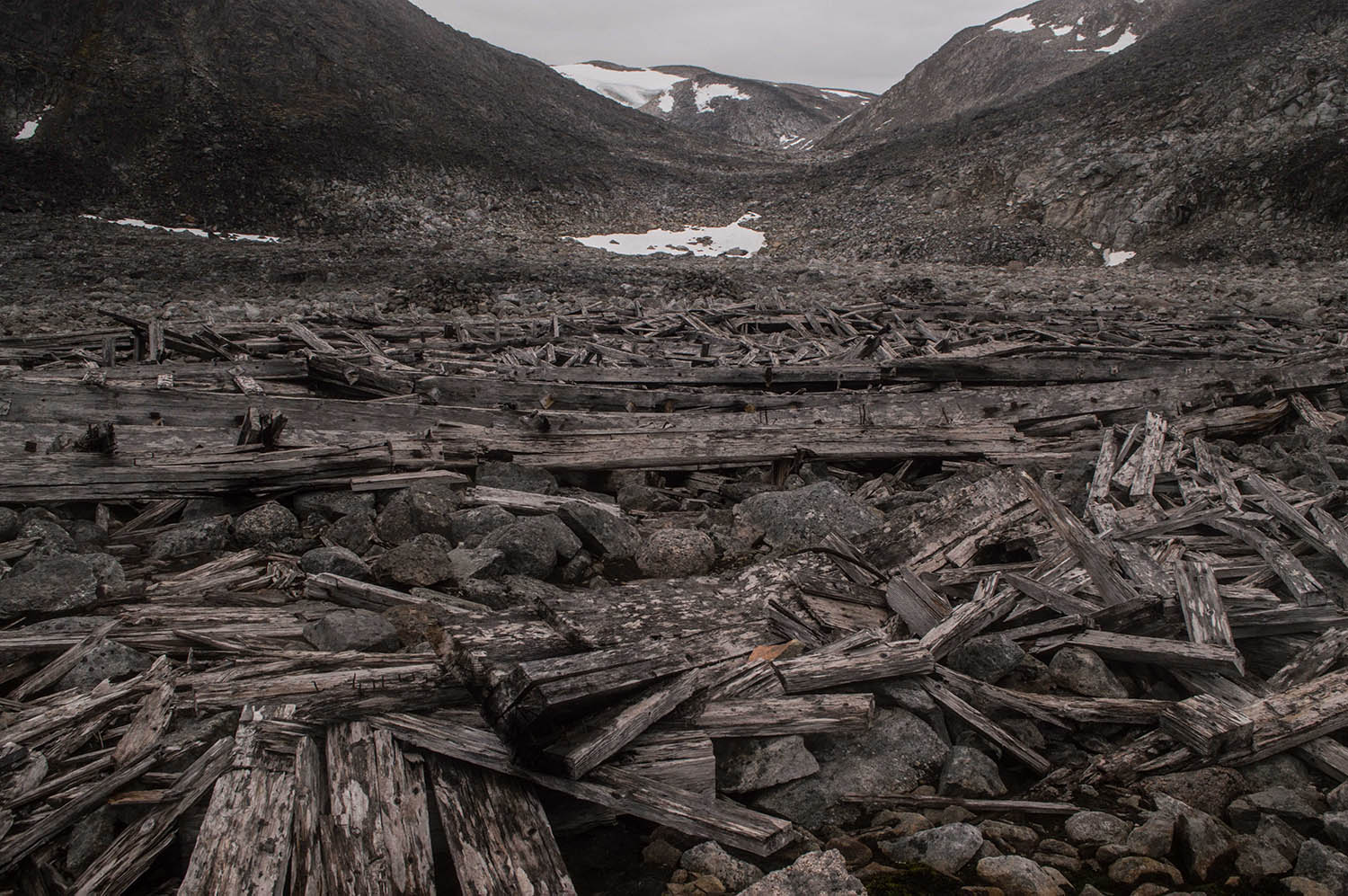
Photo by Ivan Kutasov
The other explorer who chose Virgohamma as the starting point for his polar journey was Walter Wellman. In 1906, this American explorer built a hangar for an airship, and a camp on the bay. Nevertheless, like Andrée’s expedition, Wellmann’s ended in a fiasco.
There are still sights on the island which are associated with the two polar expeditions. You can find a metal scrap yard, footings of the wooden house, and graves.
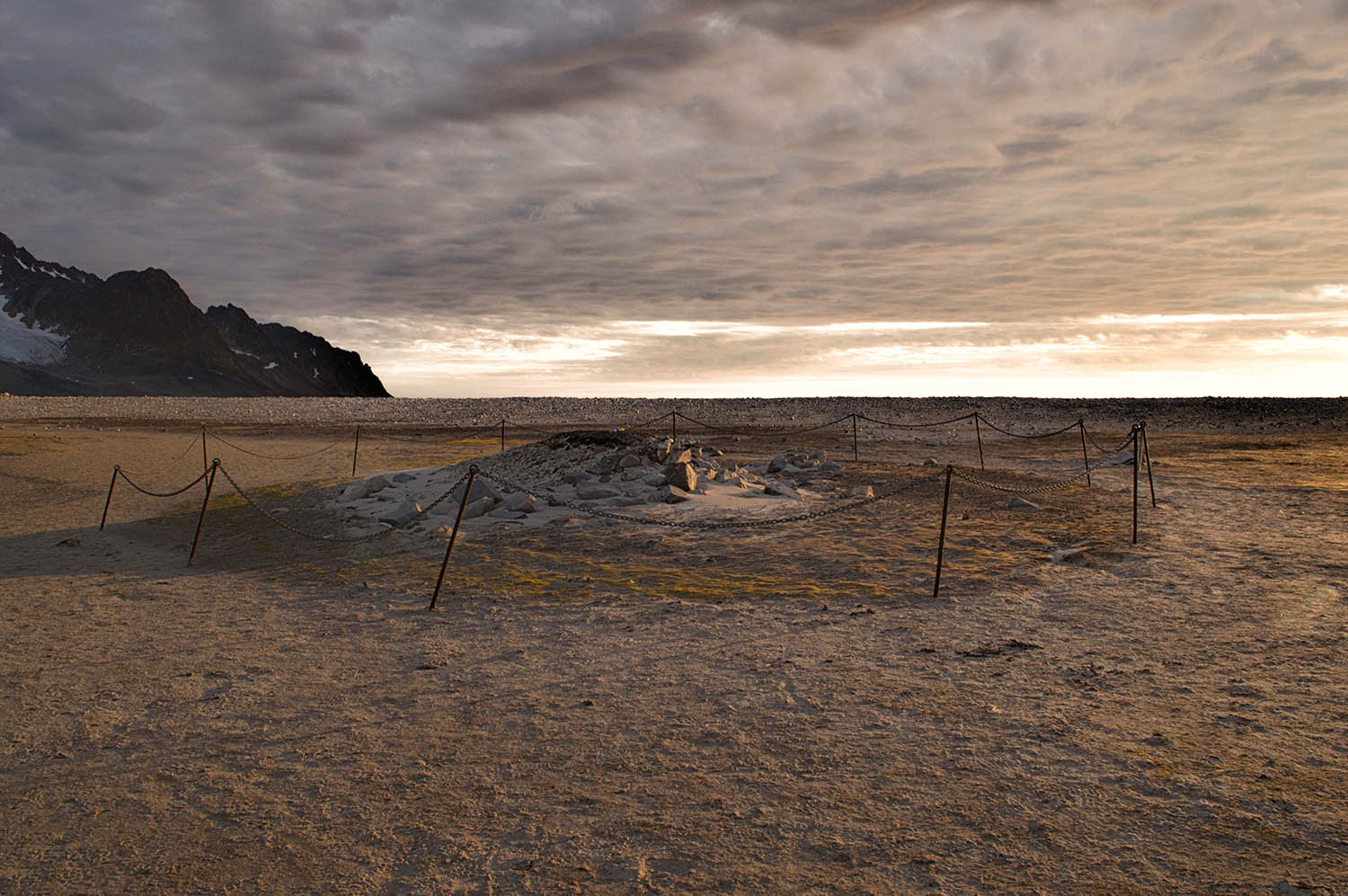
Photo by Ivan Kutasov
Alkefjellet is situated in the Hinlopenstretet. It consists of basalt cliffs which are reminiscent of an ancient castle. And it is also a home for more than 200 thousand guillemots.
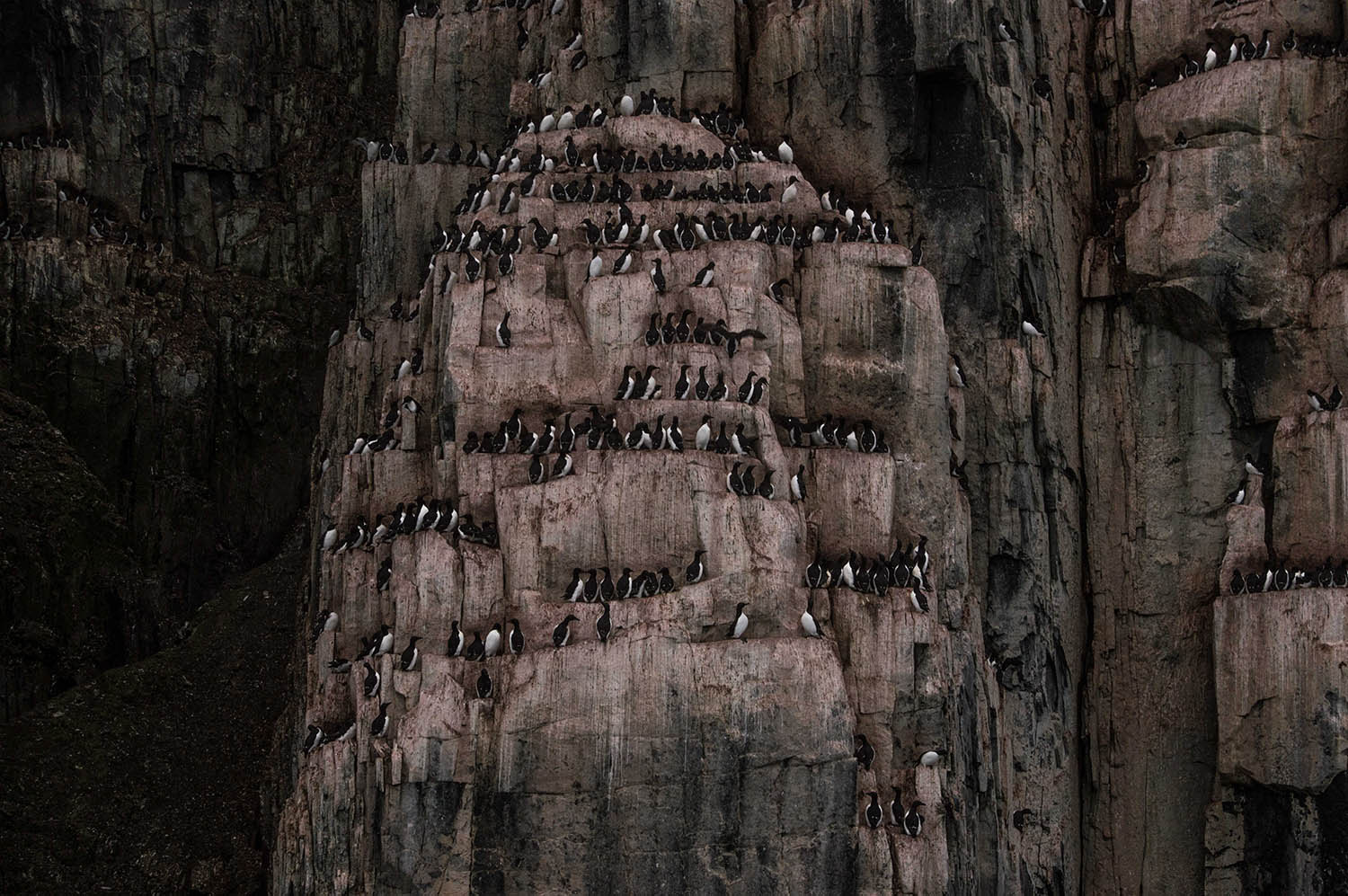
Photo by Ivan Kutasov
Spitsbergen: “pointed mountains”
Adventures know Magdalenefjorden for its dazzling glaciers. It is the very place where William Barents came up with the idea of naming this archipelago Spitsbergen, which means “pointed mountains”.
Jagged mountaintops that look like a gothic castle ascend on either side of Magdalenefjorden.
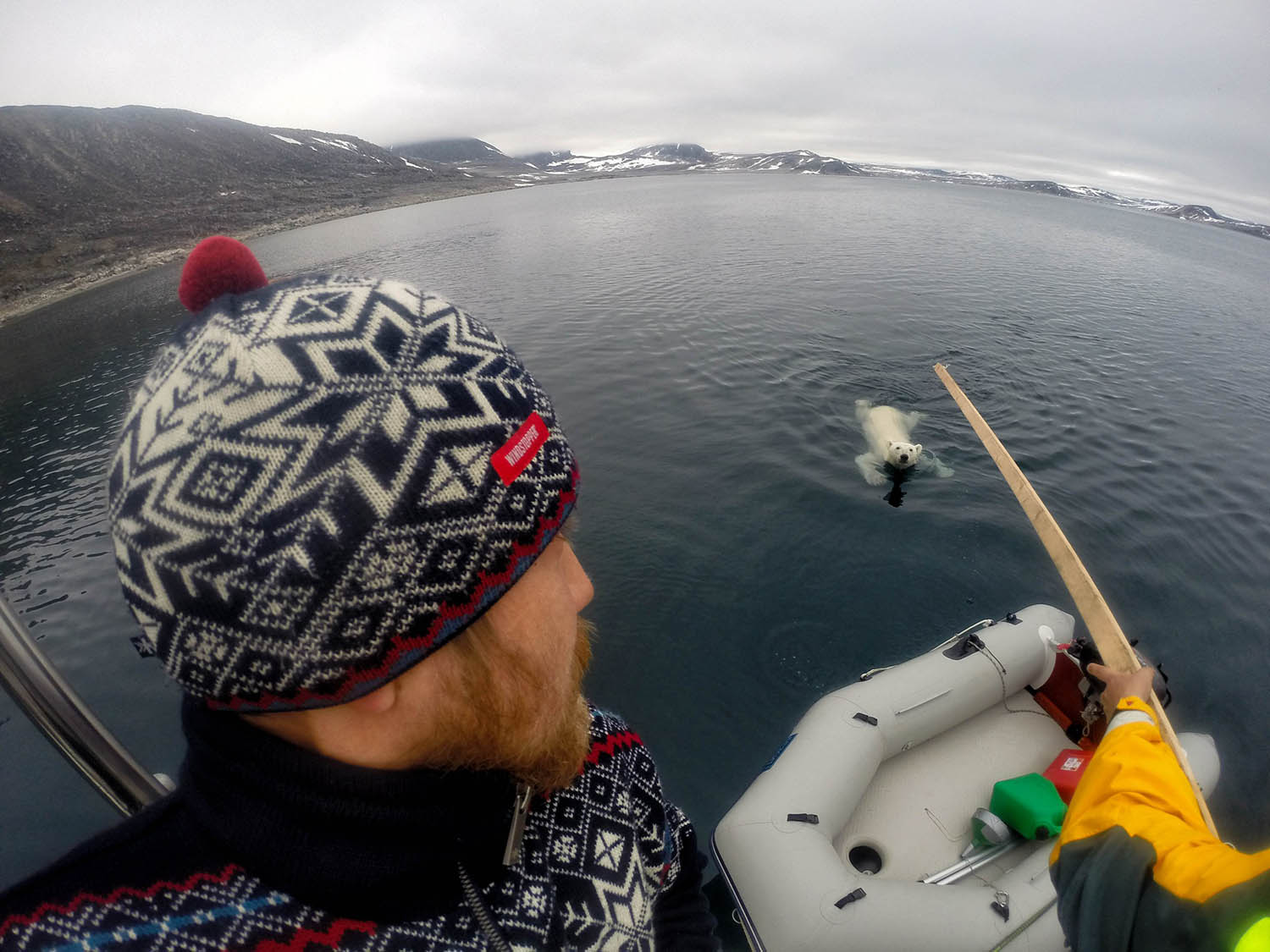
Photo by Ivan Kutasov
We also had our first encounter with a polar bear in these parts. It happened like this: we woke up early in the morning and started to prepare to leave the bay. Then we began to raise the anchor.
At this moment, the bear appeared on the shore. He jumped into the water and began swimming straight towards the yacht. Apparently, he smelled the fish which was drying on the deck.
We had to ward him off with sticks and shouts, as we prepared our weapons. Fortunately, after half an hour of attempting to climb on the deck he accepted his failure. So he just sat with an aggrieved look on the shore.
After this incident, we began placing a tripwire across the deck to forewarn us in case an unexpected guest boarded our ship.
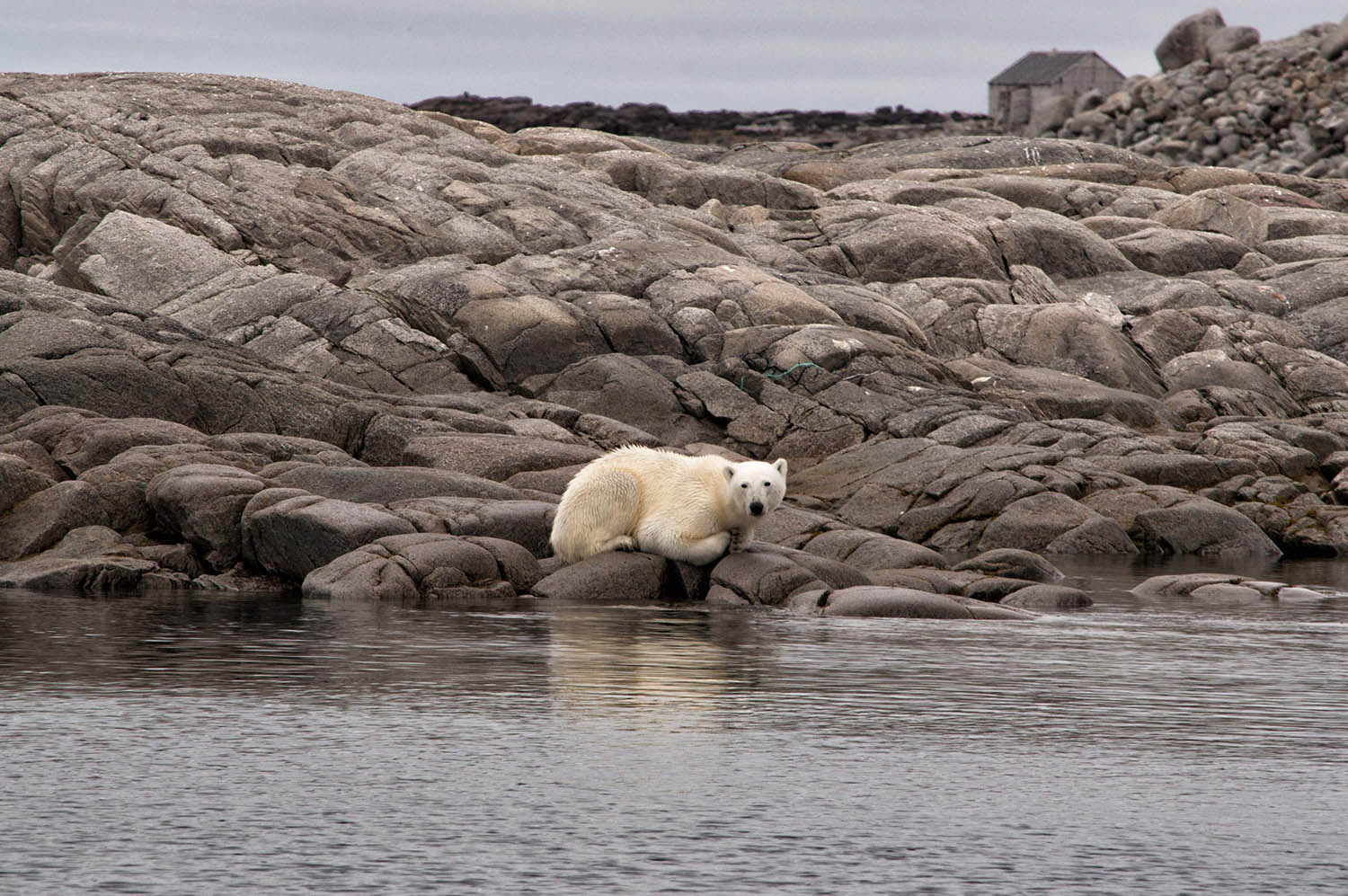
Photo by Ivan Kutasov
In fact, there have been similar occurrences in past. Bears would climb aboard yachts when everyone was sleeping and then the members of the crew found themselves in a trap.
Read more here:
A Journey To The Land Of Icebergs: The Adventures Of Ivan Kutasov
Support us!
All your donations will be used to pay the magazine’s journalists and to support the ongoing costs of maintaining the site.
Share this post
Interested in co-operating with us?
We are open to co-operation from writers and businesses alike. You can reach us on our email at [email protected]/[email protected] and we will get back to you as quick as we can.
